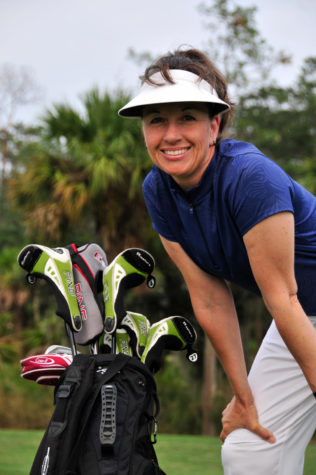Why is My Golf Game Different from the Driving Range to the Course?
March 1, 2023

Golfers often wonder why their good shots on the range may not hold up as well on the course. There is a lot of research that tells us about these differences. Dr. Robert Bjork, a prior prestigious UCLA Psychology Department Chair, has led extensive research on how to be a better golfer on the course instead of the practice range. Vision54 authors Pia Nilsson and Lynn Marriot also share a lot of information on this topic especially in their second book, The Game before the Game.
The following points may help provide ideas on how to have more fun and play better on the course (not just at the range), with many of these pointers proven by research and science.
> Practice like you’ll play. Blocked/grouped practice to the same target from the same lie with the same club in an effort to ‘groove’ something only allows us to ‘cram’ for short- term results. Random/variable practice in 15-minute bursts (‘interleaving’) allows us to create stronger learning neuropathways for long-term use. Various science experiments show this… Those who tossed bean bags repetitively from the same distance tested better right way than those who threw from various places but long-term, the variable throwers held up much better. Same with learning a 40-yard pitch shot… Those who practiced at just 40 yards did better immediately, but in the long-term, those who had to learn and adapt from only 50 or 30 yards did better.
Remember, performance and learning are different things, so if you didn’t perform well during a practice, it doesn’t mean that you didn’t learn anything. And just because you learned something doesn’t mean it can always be performed at the same high level all the time (see research articles by Dr. Robert Bjork and also Dr. Bob Christina/Eric Alpenfels at Pinehurst Resort). So decide if you want to practice to be a better range player or a better course player… It’s scientifically proven that grooving too long doesn’t work for longer-term course transfer.
> The range tee is usually a laser-leveled thing of beauty, but most courses aren’t flat like that for challenge and drainage. If you only practice and get good from flat lies, you won’t be as good on the course, since most lies have some slope and non-perfect grass lies. I’ve taken a level out to test fairway shots and not many lies were completely flat. So, if one doesn’t practice and learn from these lies, the shots won’t match up from what was learned at the range. Vary your lies, targets and clubs. Out of ten 7 irons, warm-up with 3-4 and then hit the last 6-7 from all different lies.
> I love the drill by Vision54 in which you are allowed 30 balls and have to make them last for 30 minutes at the range. Think about golf with regard to the time between shots (sometimes 5 minutes!). Yet golfers tend to practice one shot after another, often times without even leaving the station or taking a fresh grip. Start fresh after each shot, create a new shot and walk into the ball as you would on the course… That walking in rhythm is part of the shot and should be practiced as a package if one wants to get better on the course.
For more golf tips, videos or contact information, visit www.nicoleweller.com.










